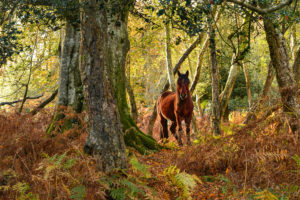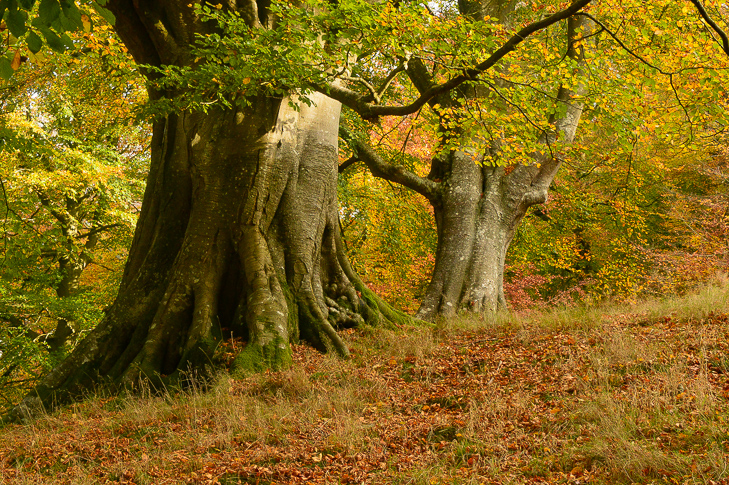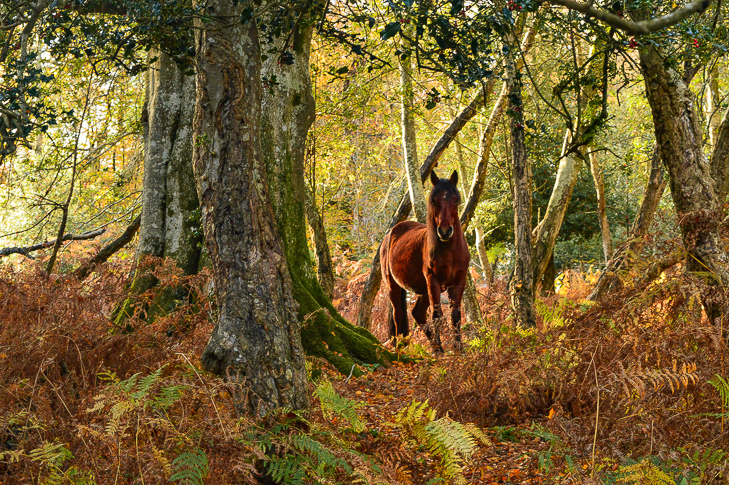 Lyndhurst has long been recognised the “Capital” of the New Forest since William the Conqueror designated the area as a royal hunting ground back in 1079. Subsequently, over the centuries many a King and Queen have frequented this part of Hampshire to come and stay at the Royal Manor.
Lyndhurst has long been recognised the “Capital” of the New Forest since William the Conqueror designated the area as a royal hunting ground back in 1079. Subsequently, over the centuries many a King and Queen have frequented this part of Hampshire to come and stay at the Royal Manor.
Lyndhurst is a busy little town and many motorists just pass through it on the way to or from Southampton or the M27 motorway. If only the travelling motorists took the time to stop here they would discover just how much it has to offer.
One of the highlights of visiting Lyndhurst is the New Forest Centre, previously known as the New Forest Museum. Its a place that gives a unique guide into the Forest’s history and heritage. The exhibition tells the story of the development of the New Forest since it was created by William the Conqueror and provides a unique insight of life and work in the Forest through the passage of time. The centre also demonstrates the best the New Forest has to offer.
Visitors have a wide selection of shops to browse in Lyndhurst, these include high street names and those exclusive to the village. Special souvenir shops offer traditional gifts to those who want a momento of their visit to the Forest. it goes without saying there are plenty of tea rooms open ready to serve a New Forest cream tea, pubs to try the local ales, cafes and restaurants to discover, as well as the famous Meridien Modena garage for the car enthusiast. There are plenty of Ferraris and Maseratis on display to drool over, if you like that kind of thing.

Things To See And Do In Lyndhurst
- In the centre of town you can find New Forest Centre. Here you can find out the full history of the New Forest and it is also the main place for Tourist Information.
- St Michael & All Angels is the predominant church in Lyndhurst and is worth a visit. It was built in the 1860s and was constructed with varying coloured stone. The stained glass windows were made by Burne-Jones and Morris. The church bears one unique Lyndhurst resident who`s name was Alice Liddell. Most people wouldn`t recognise her name at all, however, this lady was the model for Alice of Alice’s Adventures in Wonderland. She came to live in Lyndhurst after her marriage to Reginald Hargreaves and her grave can be found in the churchyard.
- Bolton’s Bench can be explored from the village and it falls under the shadow of the tall spire of the Victorian Church. Cricket matches are often held behind the hill.
- Lyndhurst also hosts a nearby Reptile Centre. It comprises eight enclosed pens which are open air. Each one of these contains a form of wildlife species which include snakes, lizards, toads, frogs and newts. All of the reptile inhabitants are native to the Britain Isles. The Reptile Centre, which can prove popular with young families can be found on the A35 Lyndhurst to Southampton road, 2 miles west of Lyndhurst. The centre is open every day between 10am and 4.30pm from April until the end of September. Telephone: 023 8028 314
- Bolderwood Deer Sanctuary is a fantastic place to observe wild deer and is another great place to visit with the family. There’s a tiered viewing area which allows uninterrupted views across to where the deer live. The deer sanctuary can be found at the northern end of Bolderwood Drive. It can be reached from the A35 Lyndhurst to Christchurch road, about 3 miles west of Lyndhurst.
- Another pleasant place to visit is Furzey Gardens. You can find these lovely gardens at Minstead, which is right in the heart of the New Forest. These delightful, informal gardens were established in 1922 and are renowned for their beauty all throughout the year. Open daily from 10.00am/5.00pm from March to October. Furzey Gardens is located near Minstead off the A35 Cadnam to Lyndhurst Road.

History Of Lyndhurst
Lyndhurst acquires its name from Saxon times and ‘lime-wood’. At Pondhead near Matley, Roman coins were excavated and on Matley Heath, which can be found between Lyndhurst and Beaulieu, numerous mounds of Bronze Age round barrows can be seen.
The first recorded history of Lyndhurst begins in 980. At this particular time it was a royal manor, granted to the Abbey of Amesbury in Wiltshire. By 1075 the first Norman king, William I, otherwise known as William The Conquerer, had established a vast area of land between the river Avon in the west, Wiltshire to the north, the south and east to the river Test, Southampton Water and the Solent as his “New” Forest, or as he called it “Nova Foresta”. This designated land was to serve as a safe dwelling place for the beasts of the chase.
As the centuries passed, Lyndhurst became popular with royalty, nobility and commoners alike. In fact it became so popular, it also attracted the likes of artists, writers and professionals of all types. It is of little surprise to learn that most of the inhabitants of Lyndhurst were involved, in the timber and coppice industries. As the town became more well known there was a surge of newcomers who required domestic workers to build large houses for them. Many locals today are still employed in the service industry, which provides accommodation, hospitality and goods for the many visitors and tourists who come to Lyndhurst and the New Forest for holidays or leisure activities.
Lyndhurst has long claimed to be the New Forest capital. It so happens that The Queens House in the town plays host to The Court of Verderers. The Verderers are the guardians of the Commoners and their Rights of Common within the UK. They are also keep a close eye on the New Forest landscape and may veto any development and highways proposals. In the 1877 New Forest Act, they were charged with managing commoning on the Forest together with inquiring into unlawful inclosures.
To the north, the village of Minstead features Furzey Gardens which was established in 1922. Pleasant tea rooms at Acre Down Farm may be worth stopping by and the burial place of Sir Arthur Conan Doyle can be found in the village churchyard.
